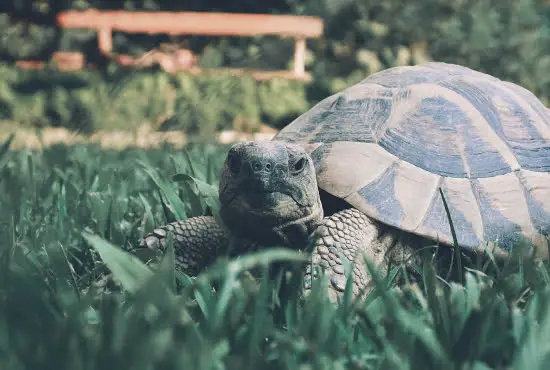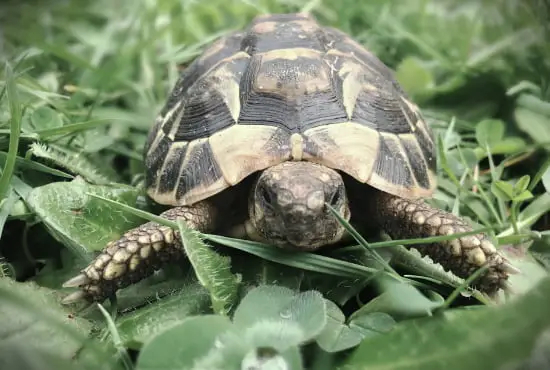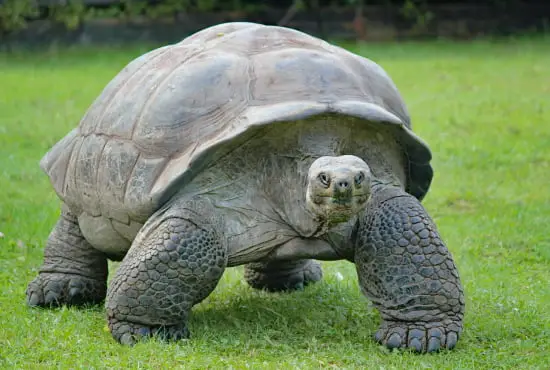General Information
Tortoises are some of the longest-living animals in the world, living up to 150 years old in captivity. They’re also among the most interesting of all reptiles, with shells that can grow up to three feet in diameter and bodies that can weigh as much as 550 pounds. As members of the family Testudinidae, they have several physical traits that make them uniquely suited to their native habitats around the world. Read on to learn more about how tortoises live and why they are so popular among herpetologists and other zoologists alike.
The word tortoise has been used to refer to any land-dwelling, or terrestrial, turtle. Technically speaking, though, there are two types of turtles: sea turtles and tortoises. Sea turtles spend their entire lives in water; they breathe through lungs and lay eggs on land but live on beaches rather than in nests dug into sand or dirt. Tortoises (subfamily Testudininae), on the other hand, only live on land; even their eggs are laid in nests above ground. The word tortoise has been used to refer to any land-dwelling, or terrestrial, turtle. Technically speaking, though, there are two types of turtles: sea turtles and tortoises.

Habitat
When choosing a habitat, think about where your tortoise came from. If you don’t know, then ask around at pet stores or reptile rescue centers; they should be able to point you in the right direction for finding an appropriate, accredited breeder. The most popular breed of tortoises, Mediterranean tortoises (Testudo graeca), hail from rocky areas in Greece and Turkey.
They do well outdoors if provided with shelter from predators like raccoons and birds of prey, as well as from extreme temperatures. Because they are mainly active during warm times of day, you will want to place them in an area that gets plenty of suns but is shaded on hot afternoons.
The Coolest Tortoises on Earth
Low-Profile Landscapers: Aside from being pretty cute, turtles and tortoises are often very useful animals that can aid in ecosystems maintenance. Many turtles have diets consisting of invasive species. While landscaping, it is likely you will come across turtle eggshells that have been eaten by large dogs or raccoons or perhaps even vultures.
Many people think they are picking up rocks when they grab at turtle shells out of curiosity. Picking up a turtle shell could seem harmless to some, but the mother would return to find her young dead from dehydration if she were to leave them unattended for any length of time.

The Largest Tortoises
Galapagos tortoises are enormous, weighing up to 250 kilograms (550 pounds). They reach lengths of more than 1.5 meters (about 5 feet) and can live for 100 years. But they aren’t even close to being the largest tortoises in existence—the Aldabra giant tortoise can weigh up to 400 kilograms (880 pounds), and have shells that can measure 2 meters (more than 6 feet) long! The Aldabra is critically endangered, however; these giants were believed extinct until they were discovered in 1891. About 2,000 of them remain alive today.
How Long Do They Live?
Not all tortoises live on the land—some can spend their entire lives in water! Also, did you know that tortoises cannot retract their head into their shell-like other turtles’ can? Instead, they have evolved skin flaps called helmet plates that protect them from predators. No helmet plates for these guys! One of these helmet-less tortoises is one of its best defenses. However, if these guys are attacked by animals bigger than themselves, they will enter into an almost comatose state until the danger has passed. I wonder how many people have tried to pick up these comatose tortoises and had their hands bitten off as a result.

Interesting Facts About These Creatures
1. They live for 100 years, or longer in captivity.
2. They reach sexual maturity at 10–20 years of age, although many breeds in their early teens.
3. There are over 300 different species of tortoises, including Galapagos tortoises that live on several islands off South America and were used by Charles Darwin as some of his original evidence for evolution; African spurred tortoises that can be found roaming in grasslands across southern Africa; Leopard tortoises which are native to southern Europe, northern Africa, and southwest Asia; and Red-footed tortoises found across sub-Saharan West Africa.
4. Some tortoises can run up to 15 miles per hour!
5. Their shells are made up of more than 60 bones, called plates.
6. Some species have one bone in each limb that is larger than all other bones in its body combined – known as heel bone
7. It takes 25 years for a tortoise’s shell to fully harden

